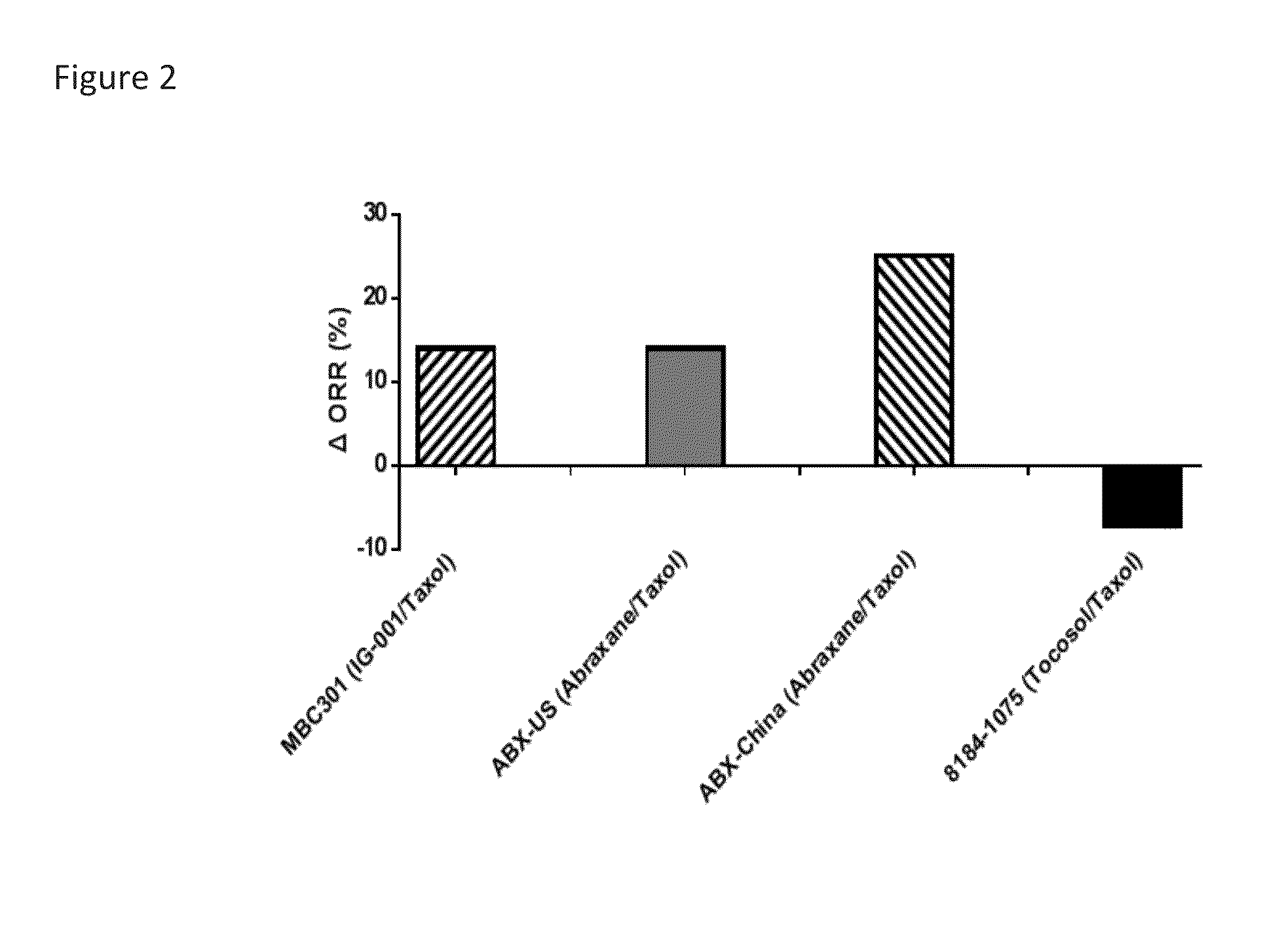Method of Engineering Nanoparticle
a nanoparticle and nanotechnology, applied in the field of nanoparticle engineering, can solve the problems of dose limitation and hypersensitivity reaction
- Summary
- Abstract
- Description
- Claims
- Application Information
AI Technical Summary
Benefits of technology
Problems solved by technology
Method used
Image
Examples
example 1
Paclitaxel Release
[0067]IG-001 (Genexol-PM) is a cremophor-free, polymeric micelle formulation of paclitaxel. IG-001 is free of Cremophor-induced toxicities such as hypersensitivity reactions, prolonged or irreversible peripheral neuropathy, and altered lipoprotein patterns. IG-001 (Genexol-PM) utilizes biodegradable di-block copolymer composed of methoxy poly(ethylene glycol)-poly(lactide) to form nanoparticles with paclitaxel containing hydrophobic core and a hydrophilic shell.
[0068]IG-002, also known as Tocosol, is a cremophor-free, vitamin E-based paclitaxel emulsion incorporating a P-glycoprotein (Pgp) inhibitor and particle size-based tumor targeting. The particle contains three components: The inner core consists of lipophilic material; d,l-alpha tocopherol. At the interface between the lipophilic emulsion particle and its aqueous environment, a number of surfactants are employed, including the p-glycoprotein (pgp) inhibitor alphatocopherol polyethylene glycol succinate (TPGS...
example 2
Paclitaxel Release
[0073]Paclitaxel release from each formulation was tested using equilibrium dialysis. Briefly, paclitaxel, IG-001, IG-002, Taxol or reconstituted Abraxane was added to one side of the well, and blank buffer to the other side. Samples were taken from the buffer side for the analysis of the appearance of free paclitaxel. The drug release profile from Abraxane appears similar to neat paclitaxel. Drug release is slowest for IG-002 (0.5% at 30 minutes, statistically significant versus the other three groups), followed by Taxol. Fast release was found for IG-001 and Abraxane. Results are shown in FIGS. 4a and b.
example 3
[0074]IG-001 (Genexol-PM) is a Cremophor-free, polymeric micelle formulation of paclitaxel utilizing biodegradable di-block copolymer composed of methoxy poly(ethylene glycol)-poly(lactide) to form nanoparticles with paclitaxel containing a hydrophobic core and a hydrophilic shell. IG-001 has a mean diameter of 25 nm with relatively low light scattering potential. Stability of the nanoparticle was examined across various concentrations to determine the approximate CMC—critical micelle concentration. IG-001 rapidly dissociates from intact nanoparticles upon dilution in serum at concentrations less than 50 ug / ml—higher than the Cmax of IG-001—following a 3 hr infusion (FIGS. 3a and b). The CMC is higher than experimental maximum drug level. Therefore, once administered, IG-001 readily gives up its paclitaxel cargo to endogenous drug transporters for transport into the underlying tissues.
PUM
| Property | Measurement | Unit |
|---|---|---|
| Area | aaaaa | aaaaa |
| Cytotoxicity | aaaaa | aaaaa |
Abstract
Description
Claims
Application Information
 Login to View More
Login to View More - R&D
- Intellectual Property
- Life Sciences
- Materials
- Tech Scout
- Unparalleled Data Quality
- Higher Quality Content
- 60% Fewer Hallucinations
Browse by: Latest US Patents, China's latest patents, Technical Efficacy Thesaurus, Application Domain, Technology Topic, Popular Technical Reports.
© 2025 PatSnap. All rights reserved.Legal|Privacy policy|Modern Slavery Act Transparency Statement|Sitemap|About US| Contact US: help@patsnap.com



